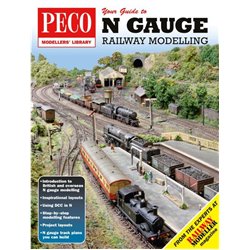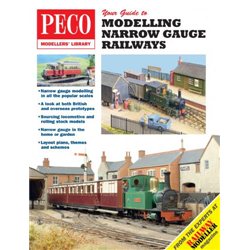Generally, plastic model plane kits do not come with plinths supplied. Nowadays, the majority of kits are designed to...
No products
Product successfully added to your shopping cart
There are 0 items in your cart. There is 1 item in your cart.
Search Tips
Christmas and New Year
We are dispatching orders every weekday apart from Christmas Day, Boxing Day and New Year's Day.
If you order is time critical, select next day delivery at checkout.
The shop in Sandown is closed from 25th December, reopening on 30th December.
How do I build a model railway in limited space?
In the realm of model railways, enthusiasm often outstrips available space. But fear not! With careful planning and ingenious design, creating a captivating railway layout in a confined area is entirely achievable. Whether you're limited by room size or simply prefer a more compact setup, this guide will equip you with the expertise needed to maximise every inch of your miniature world.
1. Plan Wisely:
Before diving into construction, meticulously plan your layout. Measure the available space and sketch out a rough design, considering elements like track configuration, scenery features, and operational areas. Embrace creativity by exploring unconventional track layouts such as loops, figure eights, or spirals to optimise space utilisation.
2. Choose the Right Scale:
Selecting an appropriate scale is crucial for small layouts. Popular options like N gauge or even TT gauge offer intricate detail while requiring minimal space. Conversely, if you prefer larger trains, consider narrow-gauge prototypes or utilise selective compression to fit larger scales into smaller areas.
3. Focus on Key Features:
Incorporate focal points that enhance the visual appeal and narrative of your layout. Whether it's a bustling station, a scenic landscape, or a quaint village, prioritise elements that capture the essence of your chosen theme while complementing the available space.
4. Utilise Vertical Space:
Think vertically to maximise surface area. Incorporate elevated sections, bridges, or multi-tiered platforms to create depth and add interest. This approach not only expands the layout's footprint but also offers dynamic viewing angles for a more immersive experience.
5. Modular Design:
Embrace modular construction to create flexibility and adaptability. Dividing your layout into smaller sections allows for easier transportation, assembly, and future expansion. Additionally, modular layouts facilitate experimentation with different configurations without committing to a fixed design.
6. Streamlined Scenery:
Opt for minimalist scenery techniques to avoid overwhelming the limited space. Focus on essential elements such as backdrops, ground cover, and strategically placed structures to create depth and realism without overcrowding. Use forced perspective and strategic placement of scenic elements to create the illusion of vast landscapes within a confined area.
7. Integrated Storage:
Efficiently utilise under-layout space for hidden storage and operations. Incorporate removable panels, sliding drawers, or lift-out sections to conceal wiring, rolling stock, and other accessories when not in use. This integrated storage solution maintains a clutter-free environment while maximising functionality.
8. Detailing and Weathering:
Pay attention to detailing and weathering to add realism and character to your model railway. Small layouts offer the opportunity to focus on intricate details, such as weathered buildings, realistic foliage, and finely detailed rolling stock. Experiment with weathering techniques to create authentic-looking scenes that tell a story.
9. Continual Iteration:
Finally, remember that building a model railway is an ongoing journey. Continually refine and improve your layout based on feedback, inspiration, and newfound techniques. Embrace the iterative process, and don't be afraid to dismantle and rebuild sections to achieve the desired result.
Click here to receive the tips weekly in your mailbox. You can unsubscribe at any time.










